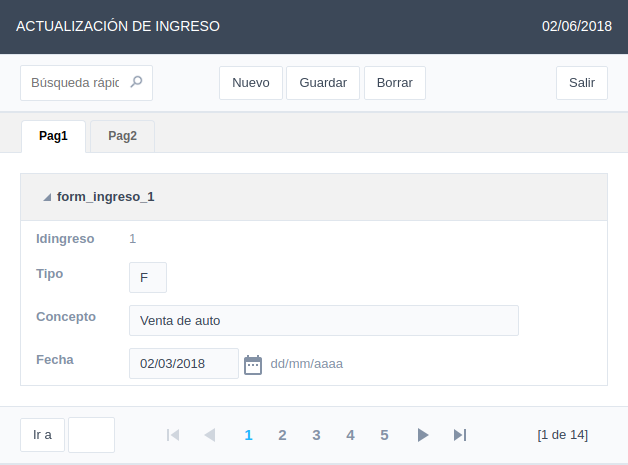

The next step is to mark as required the fields: User, Amount and Months And as read-only the fields: Interest and Total (option located in Control -> Edit Fields). Īccording to the above the application will have 5 (five) fields, for this we click Control -> Fields -> “New Field”, enter the number of fields to create and click “Next”.įinally, we click on “Create” in order to save the configurations of each created field. Once we have these data the application will query the table Parameter and return the percentage of interest to apply for the amount of quotas selected and the total to be paid. The next step is to create the necessary fields for the user to enter their name, desired amount and number of installments.

We create a Control application in order to add the fields we want to show the user and from which we will then carry out the process that will calculate how much the user will have to pay and how much he will pay each month including interest. Once inside our project in the Scriptcase, we create the connections that we will need to consult the table in PostgreSQL (conn_Parameter) and then insert into the MySQL table (conn Sales). Within the table “Parameter” we have the percentage of interest that the user will pay based on the number of months that he chooses in our application. The process that we will do will calculate the percentage of interest that the user will have to pay based on the amount desired and the number of installments (months) that he needs to pay back. The table “Parameter” in a PostgreSQL database. In terms of Database structure, we have two tables which are shown below: We will use the following Scriptcase Macros to make our work easier: On the other hand the user will enter some parameters and then complete the calculation and insert the result into the Database.

The data processing that we will show as an example here is the one done at the Application level, to execute this example we will take certain parameters from the Database. Depending on how big the volume of data to handle are and the interaction that the user must have, one or the other may stand as the best option in some cases. Data Processing in Control Forms: Using Macros to query and insert into Databaseĭata processing can be done at the Database level (with Stored Procedures, Triggers, Functions and so on) or Application level.


 0 kommentar(er)
0 kommentar(er)
